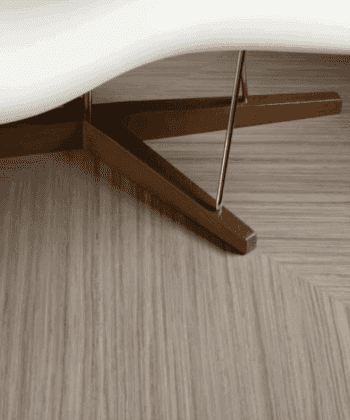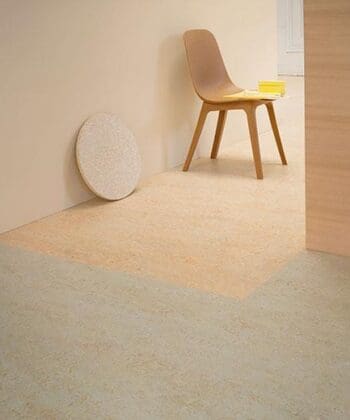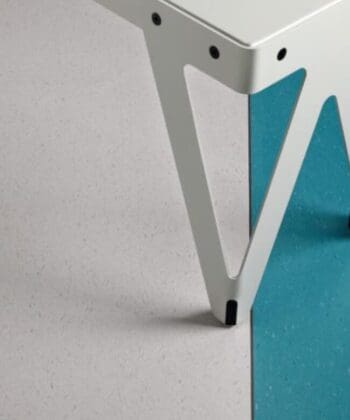Podcast
NTE Podcast: Eco-myths and Internet Mis-information
NTE Podcast: Eco-myths and Internet Mis-information
I know I’ve harped on the topic of internet research before, but this episode takes it much further. This week, Jay and I discuss many of the myths and fallacies of the green and healthy building process and hopefully, shed some new light on them for you. We’ll talk about plumbing, flooring, VOC’s and more. This was such a fun episode for us and I trust you’ll enjoy it as well.
iTunes
Google Play
Spotify
Transcript
NTE Podcast: Eco-myths and Internet Mis-information
Andrew Pace: Welcome to the Non Toxic Environments podcast. My name is Andrew Pace. Every week, my cohost Jay Watts and I will discuss healthier home improvement ideas and options. Thank you for finding us. And please enjoy the show.
Welcome back to Non Toxic Environments. This is Andy Pace and as always, Jay. How are you this week?
Jay Watts: Well, I’m staying warm here in the West coast. Andy spring has sprung. And are you thawing out out there or is it a shorts weather yet?
Andy: I know a lot of states can say this, but here in Wisconsin we’d love to say if you don’t like the weather, just wait five minutes. So we were blessed with this past weekend we had weather in the seventies, sunny, beautiful. Woke up this morning to snowflakes.
Jay: Wow.
Andy: And just north of us, they had measurable snow fall. So, welcome to spring in Wisconsin.
Jay: I don’t worry. In five minutes it’ll change.
Andy: You got it. It will.
Jay: So today I think we’re going to be talking about some of the myths that surround the industry that we’re in. And I know you’ve got some things to say about some of the myths that people kind of labor under when they’re doing their research on healthy building products.
Andy: Sure. And I think a lot of these are myths that just get sort of passed along via blogs and different posts and so forth. These are things that we’ve talked about over the last couple of years on the podcast. A couple are new. But I really wanted to focus on myths because you know, right now we’ve got a lot of projects going on across the country and I constantly hear the same things coming from customers and I just wish I knew where the genesis of these was.
Jay: Have you been able to kind of isolate where it starts? It’s so funny because in the context of the virus and you start to think about where did the virus start, well it started in Wuhan, China. But this is kind of, that just crossed my mind when you were saying that, where do the myths begin? I think there’s a lot of, and we’ve talked about this, people start researching on the internet and they may go down a path on the internet and that path keeps going deeper and deeper and deeper down into the well, and maybe some of that stuff is percolating back up as people hear, they start to hear several different voices say the same thing, and then they start thinking, well, that’s how it is. That’s, that’s the rule, right? In fact, it may not be, it dismissed maybe a series of subjective opinions, certainly based on someone’s experience, but there’s where all the problems lie because if something goes, quote unquote wrong, there’s so many different reasons why that may be happening. And so it’s like digging into the archeological, mother load to try to find out, okay, well where and how and what and all those questions that you and I have answered over the years as healthy forensic doctors, detectives, how do we, not doctors but detectives, how do we separate the chaff from the wheat as it were?
Andy: Exactly.
Jay: And then get to the truth of a discussion.
Andy: I find that there is a story or a project that goes haywire somewhere. Somebody writes about it and then the next person that does their Google research reads that story and then writes it in their blog and then the next person writes it in their blog. Here we go, you know, 15 years later, 20 years later, and we’re also having the same discussions as if it’s brand new. So I’ll jump right into it. This is something that actually came to me in the last couple of weeks. There was a very well known blog site for healthy building, green building, and they had their list of eco-friendly flooring options and right in there said that natural linoleum should never be used in bathrooms and I can’t tell you how often I have discussed this with people over the years, folks, there is no such worry.
Jay: Yeah. Frederick Walton would roll over in his grave, I think.
Andy: Listen, natural linoleum or what we know here in the States is a brand called Forbo Marmoleum. And I’ll get to a side note on this in a second, but natural linoleum, used to be used in the old Naval ships to the point where they used to call it battleship flooring. This stuff is amazing. It’s an all natural material that essentially gets harder with age, gets more resistant to the elements with age.
Jay: I think what’s really interesting about what you’re saying, Andy, is the, the basic formula is pretty much the same one that he invented, that Walton invented in 1863.
Andy: You are a 100%, right.
Jay: So when you think about that for a second and go, wait a minute, they haven’t needed to tinker with it. We’ve used it in so many installations, both harsh installations and not so harsh and it’s done really, really well. My example locally is our art museum here in San Diego, up on the second story that all of that floor in the galleries is linoleum. And it looks beautiful. It looks beautiful.
Andy: It’s fantastic. I mean the IKEA stores across the country, most of them have linoleum, natural and on all of their elevated floors where you’ve got 10 to 20,000 people a day with shopping carts.
Jay: So the problem is perceived problem is we’ve got a lot of water and water is going to attack the linoleum. Is that what the myth is about?
Andy: The myth is that water pooled water will cause it to swell and lose its durability. This product is used in cafeterias, surgical rooms, auditoriums, retail spaces. And it gets just about everything thrown at it on a daily basis. Years ago you could argue that the adhesives that the linoleum was put down with just didn’t have a lot of longevity to it. And so if water got between a seam or around the flooring and underneath it could attack the sub floor, which would cause the sub floor warp or swell. Making the linoleum looked like it was having a problem. But folks, that is just not an issue. Um, there are different methods and different materials involved with natural linoleum and there’s a product for every application. But one thing is sure, you can use natural linoleum in a bathroom. I’ve done it myself in homes of my own and with clients for 25 years.
Jay: Myth busted one, boom.
Andy: Alright, myth bust number two, natural ingredients are always preferable to synthetic ingredients. This is something that AFM deals with on a regular basis.
Jay: Yes, we do. How do we begin the discussion on this? I frame it this way. There are natural ingredients that are certainly are great and those natural ingredients maybe we want to be a little careful of. Conversely, there are synthetic ingredients that you want to be wary of and there’s a lot of synthetic ingredients that you don’t have to worry one little bit about. And on my side from my brand, I understand that because the dominant a model for our product line is synthetic. And so people go, well, wait a minute, how do you do that? How do you use synthetics? Aren’t those deadly petrochemicals and aren’t those toxic? And of course, you’ve had the conversation and I’ve had the conversation about talking about the nuances and in our case specifically about how we went about discovering what we discovered about the use of synthetics.
Andy: One thing to point out to people is that natural materials; we’re not gonna discuss religion, but whatever your religion is, if your God or the being created the earth and created everything on earth, the fact that natural materials contain natural chemicals, natural chemicals sometimes are so complex that we still do not understand how they react or off gas or interact with other chemicals, synthetic chemicals, manmade chemicals, something that’s been made in a lab and we can see the efficacy of those. We know that A plus B plus C equals D and we know that let’s say with Safecoat products, some of the ingredients are natural, some of them are synthetic, but we know that all the ingredients that are used are used in a controlled manner that once the product cures, it’s completely free of chemical outgassing. When you use natural ingredients as the bulk of the product, there’s still a lot to be learned about that. And, think about this, the aromas that natural ingredients create, whether it’s linseed oil, like in Marmoluem or the smell of cork from cork flooring. These odors are, I would say virtually impossible to seal up with any AFM product or any other material because the chemistry of those natural materials is so complex. We don’t even know how to stop it from smelling, right? So flip side using them as a coating, you just don’t know what it can lead to. And so when we’re dealing with folks who have chemical sensitivity and other immune system disorders, we have to make sure that we’re using materials that we can verify how long it takes to cure and then it stops off gassing. So we can be sure clients are getting what they’re supposed to be getting.
Jay: Yeah. I think you’ve alluded to something, it’s the predictability of the science behind the synthetic work that we’ve done and that other companies do. However, folks, let’s be clear, we’re not bashing natural ingredients here or we’re just saying that you have to look at it through maybe a little bit different lens to understand the nuances. Andy and I are both in favor letting good chemistry from whatever quarter it comes, letting that best chemistry rise to the surface that we can all both as manufacturers and consumers take advantage of it.
Andy: Right? And I think we have to just understand that, the myth that because it’s synthetic, it can’t be safe or because it’s natural, it has to be safe. Both of those are wrong. And so there are safe synthetic ingredients. There are safe natural ingredients, and we always strive to just choose the safest ingredients no matter how they’re derived.
Jay: Myth number two. All right. Okay.
Andy: Okay. Myth number three. Let’s go back to flooring again. Okay. Because I’ve heard this since 1996.
Jay: Ooh, it’s an old one.
Andy: This is an old one. Bamboo is the most eco-friendly hardwood that I could use.
Jay: Wow. Yeah, because it’s grass. It’s not wood.
Andy: Right? And so I call it a hardwood because it falls along that classification. But you are exactly right. It’s a grass. Part of building healthy. Part of living in a healthy home is not just health of the body from a chemical load standpoint, but it’s also health of the mind. We’ve touched on this before. When people use like sthapatya veda architecture to construct a home, one of the rules is that every corner of every room should bring you bliss. So think about this from a standpoint of mental health. If you walk into your kitchen and you installed new bamboo flooring, you walk in there every morning to get your cup of tea or cup of coffee, and you look down and you go, Oh, I just love this floor. How valuable is that for mental health?
Jay: Man, it’s huge. It’s huge.
Andy: It’s huge.
Jay: So I’m just visualizing that right now. I don’t have bamboo floor on my floor on my home folks, but I can imagine I have good imagination and I’m sitting here as Andy saying this, and I’m like, wow. I would be very happy if I was walking across that to get my tea every morning at seven o’clock.
Andy: Exactly. And so I use that when I describe bamboo flooring because the myth is that bamboo is far more ecofriendly than wood because bamboo is a grass and it grows really fast. Therefore you get the same yield out of a three year old bamboo plant than you do out of a 60 year old Oak. Well, that’s not necessarily true, number one. Number two, all bamboo is grown and manufactured in China. So from an environmental standpoint, what’s better? Bamboo or hardwood, one can be procured probably from your state. One has to be shipped literally around the world. Bamboo is very hard, but at some point, hardness of a floor doesn’t necessarily translate to longevity because the flooring material is so hard that the finishes can actually dent and scratch easier. Alright.
Jay: I’m sure all this is feeling a little counterintuitive to folks.
Andy: It is. And so that’s why I preface this whole thing with if you love the look of it and it makes you feel good, understand that it is very durable and there are some sustainability aspects to it. Of course you want to make sure you’re buying a bamboo that uses a formaldehyde free adhesives to ply it together, right? Because if you don’t, now we’re talking bamboo been far more harmful than traditional solid flooring. But today’s day and age, most of the material you’re going to see will be formaldehyde free. All right. So the myth here is that bamboo is the most eco-friendly hardwood product. I don’t believe that’s the case. I think there are some benefits, but at the end of the day, if you love the look of it, you love walking on it every single day, folks, that is something that is good for mental health. And I call that a healthy home benefit. I can’t say I’ve necessarily busted this myth cause I think I’ve argued both sides of it pretty well.
Jay: Yeah, you have. And so we’ll call that a draw.
Andy: All right, that sounds good. We’ll call it a draw. All. Alright, let’s jump into something a little more high performance building related. This is one that I get a lot and you know, it’s not a very sexy topic, but it’s something I think everybody’s interested in. Copper piping is better than PEX piping.
Jay: Oh, this is a good one. This is gonna be interesting to hear this one.
Andy: All right, so if you’re not familiar what PEX stands for, it means cross-linked polyethylene. Essentially folks, what this is a piping material that takes the place or replaces the copper piping in your house. Now this is something that gets argued quite a bit on all the green building pages mainly because your state of California, Jay keeps on changing its mind whether they think it’s an okay product to use or not. And we all know that what happens in California with environmental and health regulations, kind of dictates what the environmentalists across the country are going to say.
Jay: Yeah, pretty much.
Andy: So what are the pros? Alright, copper pipes last a long time, usually at least 50 years. It’s not prone to leakage or corrosion. But I’ll say there’s an asterisk with that because it all comes down to the installation. Sure.
Jay: Is there any, is there an extraction issues with copper?
Andy: And so that’s kind of one of the cons. Most people will say, Oh, there’s no problem with copper. Of course there’s some folks that will say copper pipes are good because copper is a trace mineral that we need in the human body. Although, new copper actually can release far more than what is considered healthy. Okay. Copper is recyclable. Copper will withstand extreme temperatures really well. A couple of downsides. Copper is very expensive these days. Copper is prone to condensation. So in the warmer, more humid climates, you got cold water flowing from your well through your copper pipes, you start to get condensation. If you have your pipes within enclosed walls or above a finished ceiling, you can run into some mold issues.
Jay: I was going to say there’s a problem there.
Andy: Exactly. An alternative would be cross-linked polyethylene now.
Jay: Ooh, it’s made from petrochemicals made from plastic.
Andy: Not all plastic is PVC plastic. Now PVC or what’s called CPVC, has been used and still is used in parts of the country for potable water. Not PVC. PVC is used for drains, but CPVC is used for potable water. I wouldn’t recommend it. It is more likely to leach into the water. And so PEX or cross-link polyethylene came about probably about 20, 25 years ago. Extremely long life. We’re talking 50 to a hundred years is no problem whatsoever. Very easy to install because it’s very light. Makes it easy for one plumber to work with it. Has excellent temperature tolerance, it’s inexpensive. You know, it’s roughly a quarter to one 10th the cost of copper. And it does not require adhesives to put it together. Most of the fittings are press fit. So when people worry about plastic piping and they worry about PVC, they worry about the PVC glues mostly. And there’s no alternative to that unfortunately with PVC. With PEX, it’s all press fit fittings. And that is it.
Jay: Is it easily accessible?
Andy: Easily accessible? Yes, it is. The nice thing about PEX is that it allows a plumber a lot more flexibility in the installation process because it’s not rigid. It can go around things.
Jay: Yeah. Right, right. You got to drill a hole. Right, right.
Andy: And so, and I’m going through this right now. I’m remodeling a home here locally. We’re changing from copper to PEX. And one of the things that I love about this is you can do what’s called a manifold system with PEX where all the water for your main water supply goes through a manifold system that sends out cold water and hot water individually to each fixture in the house. There are no tees involved. And the beauty of that is you end up with a situation where your cold water is cold faster, your hot water is hot faster.
Here are the downsides. There’s obviously cons with anything. Now, the cons would be if you do have municipal water and municipal water specifically using chlorine for purification, I do recommend a whole house purifier to take out the chlorine. Chlorine is detrimental to PEX piping.
Jay: What’s it do to it?
Andy: It actually breaks it down microscopically. Which could mean you can get that funky odor and taste in the water. And so there’s that. It’s also something that can be damaged really easily by UV. So if you’re in the construction process, never keep your bundles of PEX piping outside in the sun. Always keep it enclosed. UV radiation or UV will cause it to eventually get brittle. All right?
Jay: Good stuff, good stuff.
Andy: Two more things that I would say about cons of PEX. Okay. The situation where some plumbers across the country still refuse to work with it because they really like to use copper. That’s their craft. They know what they’re doing. And they’ll talk down the use of PEX so they can use what they know best.
Jay: That’s consistent with some other traits. We know they get used to a product and they stick to the product no matter what might be better.
Andy: Exactly. And the other con of course is just that general worry that it’s plastic, it’s going to leach into the water. So I just wanted to point that out that if you take the right precautions, that’s not going to happen. So I think we’ve busted that myth pretty well.
Jay: Busted.
Andy: Busted. And so the last myth I want to bust is the myth that zero VOC means it’s safe.
Jay: I have recently pointed clients to a recording that you actually made some years ago and that was exactly the title. The myths about VOC. I listened to it all the time because it keeps being topical. It doesn’t lose any steam because the subject comes up again and again and again and again and again.
Andy: So, 30 years after starting in this business, and probably having this conversation with clients ever since- just today, I had a conversation with a client about this topic. It surprises me, it shocks me actually, that we still have to point this out. On the other hand, when the entire industry is saying, buy zero VOC because it’s going to be healthier for you it’s really hard to be, two of the lone voices in the industry.
Jay: Yeah. It is. And the drum is beat really hard, really hard. And it has been for so many years that people just, it’s like it’s gospel.
Andy: Exactly. And so let’s talk about a couple of specifics as it relates to this. So whenever we talk about VOC versus health or VOC versus toxicity, we’d like to point out a couple of things on either side of the equation to show that you really can never use this as it’s an always situation. Anybody who’s ever used nail polish remover, nail polish remover is typically acetone. Acetone is a solvent that is highly, highly reactive. Matter of fact, if I open up a can of acetone in our office building here within 15 minutes, everybody working in the office will have detectable levels of acetone in their liver.
Jay: It’s amazing, man.
Andy: That’s how fast that enters into the blood system. Acetone when used in paints and coatings is actually deemed zero VOC. It’s an exempt ingredient.
Jay: And that’s because it’s not contributing to the production of outdoor pollution or ozone.
Andy: Hundred percent. That’s exactly it. And so Jay, you hit it on the head. VOCS are regulated by the Environmental Protection Agency because of their propensity to rise to the upper atmosphere, react with nitrogen and UV and create low level smog. Some chemicals that are carbon based that will rise up actually will not react with nitrogen or UV and they won’t create smog. So the EPA has consider them exempt compounds. It’s about 37 of them that are used throughout the industry. And when these ingredients are used, they do not have to be disclosed on the safety data sheets because they don’t meet that threshold of the EPA. Acetone, ammonia and butyl acetate of the three that are most commonly used in paints and coatings. But it goes well beyond paints and coatings. It goes into things like flooring. And think of carpet, that new carpet smell that we all know that’s a combination of a lot of ingredients that make up a component called styrene butadiene rubber. But one of those ingredients is a chemical called 111-trichloroethylene that is been deemed like this specific chemical that creates that smell. That’s called zero VOC when used in building materials. So when manufacturers claim that their products are zero VOC, they’re not saying they’re zero toxin, they’re saying that their products do not contribute to outdoor air pollution as deemed by the EPA.
Jay: Right. All right. And, and so we understand this because people then are using a product that they’ve thought was safe for them and they bring it into their environment and then the reactions start to occur. Then confusion reigns because they thought they were doing the right thing. And now I have a pollution problem and it’s- why am I having the pollution problem when it’s a say it’s zero VOC?
Andy: Exactly. Exactly. The interesting thing about this argument or this myth about zero VOC, it does not equal healthy is that, look at the flip side of things. You know, just because something is a VOC, it doesn’t mean that it’s going to be unhealthy. I always use the analogy of you peel the skin off of an orange and technically speaking, you’re releasing about 850 grams per liter of VOC.
Jay: Everyone goes, whoa. Right?
Andy: But, but it’s not, it’s not regulated. It’s a natural VOC. Well, we all know natural doesn’t mean safe, but it is still a solvent. It’s still a chemical called d-limonene. And so it can be harmful to people, but how do you regulate orange groves? You can’t.
Jay: You can’t. How do you regulate a pine tree forest? There’s another one. Pine trees exude a huge amount of VOC into the atmosphere.
Andy: Exactly. I know of a product and we get a lot of this from clients who say, I was looking at this European product and they say that meets a European standards. There’s a product called Burmeister. It’s a polyurethane hardwood floor finish. And this one cracks me up because it actually says it’s a safe zero VOC polyurethane. It doesn’t contain any VOC solvents. And they also say doesn’t contain any acetone or ammonia. So they really dig deep into this one. Yeah. So when they dig deep, I dig deep. I look at their safety data sheet. The number three ingredient listed is ammonia. And we’re talking about ammonia at levels of 450 parts per million. Matter of fact, in some of them up to 2300 parts per million. But it says it doesn’t contain these VOCs. And so I think what this is proving folks is that manufacturers understand that people generally skim the details.
Jay: Yeah. And a lot of it’s multi-syllable symbolic words that no one wants to see or can even think about. Exactly. So they just kind of glaze over it and go, okay, well I’ll buy the bigger story, which is the marketing department’s job is to tell the marketing story. And so this is where the confusion comes in.
Andy: Yeah, exactly. So I think, you know, without going on this topic for another 20 minutes because we probably could, the deal is folks that when you’re looking for healthy home products, don’t look at the VOC content. I mean you can certainly use it as one of your reference points. But don’t use it for everything because we can give you countless examples of how zero VOC materials or low VOC materials aren’t any healthier for you than something that’s got an extreme amount of VOC in it. All right. I hope this has been a good sort of primer to this topic. I would like to talk about this on a more regular basis when something comes across our desk and Jay and I can just have a quick conversation here online for everybody to say, what do you think about this? You know?
Jay: Right, right. I think what’s going to happen is I think people listening to this show are going to have some questions. I’m probably gonna see the mailbox fill up a little bit on this one.
Andy: I believe so.
Jay: People are going to come at us and say, Oh, wait a minute, I heard your podcast, you’re talking about how natural ingredients maybe they aren’t so great. I want to argue with that. So I think it’s going to be kind of interesting to see the feedback that we get on this one just to kind of, and frankly folks, Andy and I’ve said this before, bring it on. We want to have you ask us the toughest questions you can come up with and we’ll do our best to try to give you a really solid answer. And you may stump us but not for very long. So we will definitely, we take everything you say seriously on both sides of the equation.
Andy: I have to be honest, there’s nothing I like more than being stumped on a question that I have to do some serious research on.
Jay: Yeah. Right, right. So that’s how you get smarter, you learn things that you get smarter about them. As you know, Andy and I are in the business of trying to deliver the message we think is the one that’s the most resonant with everybody. And that is what we want to live a healthy lifestyle. Boy, do we ever have that in our face right now? We want to live as healthfully as we can. You can take control of that. This is the thing about what’s going on right now. We’re all feeling fearful because the virus is out there somewhere. Right? But when we’re talking about what you can do in your own home and the control you have there, I’m telling you what, this is a nice way to balance any of that anxiety you may be thinking about right now.
Andy: Yeah, that’s very well said, Jay. Thank you. All right folks, that’ll do it for this week’s episode of Non Toxic Environments. That was a good one. MythBusters.
Jay: MythBusters!
Andy: As always, we encourage you to go to iTunes and leave us a rating and a review. We’d greatly appreciate it. I want to give a shout out to… we have a whole host of new listeners in of all places South America.
Jay: No kidding. What country?
Andy: Brazil specifically, we are up to the 20th rated podcast in Brazil. I don’t know what that means folks.
Jay: You’ve been working on your Portuguese or something?
Andy: No, not at all. Not at all. Maybe it’s me just hoping that I lived in a warmer climate. Ah, that’s it.
Jay: But that’s what, in five minutes the weather is going to change.
Andy: That’s it. Five minutes. And thanks folks for listening. All right. So please leave us a rating and review, let your family and friends know about the show. We’d greatly appreciate it and we thank you very much for your loyal listenership, and we will be with you again next week. Take care everybody.
Jay: We also want to say thank you to all you moms because the only reason we’re here is because of you moms.
Andy: That’s it. Everyone happy Mother’s Day.
View Transcript PDF








